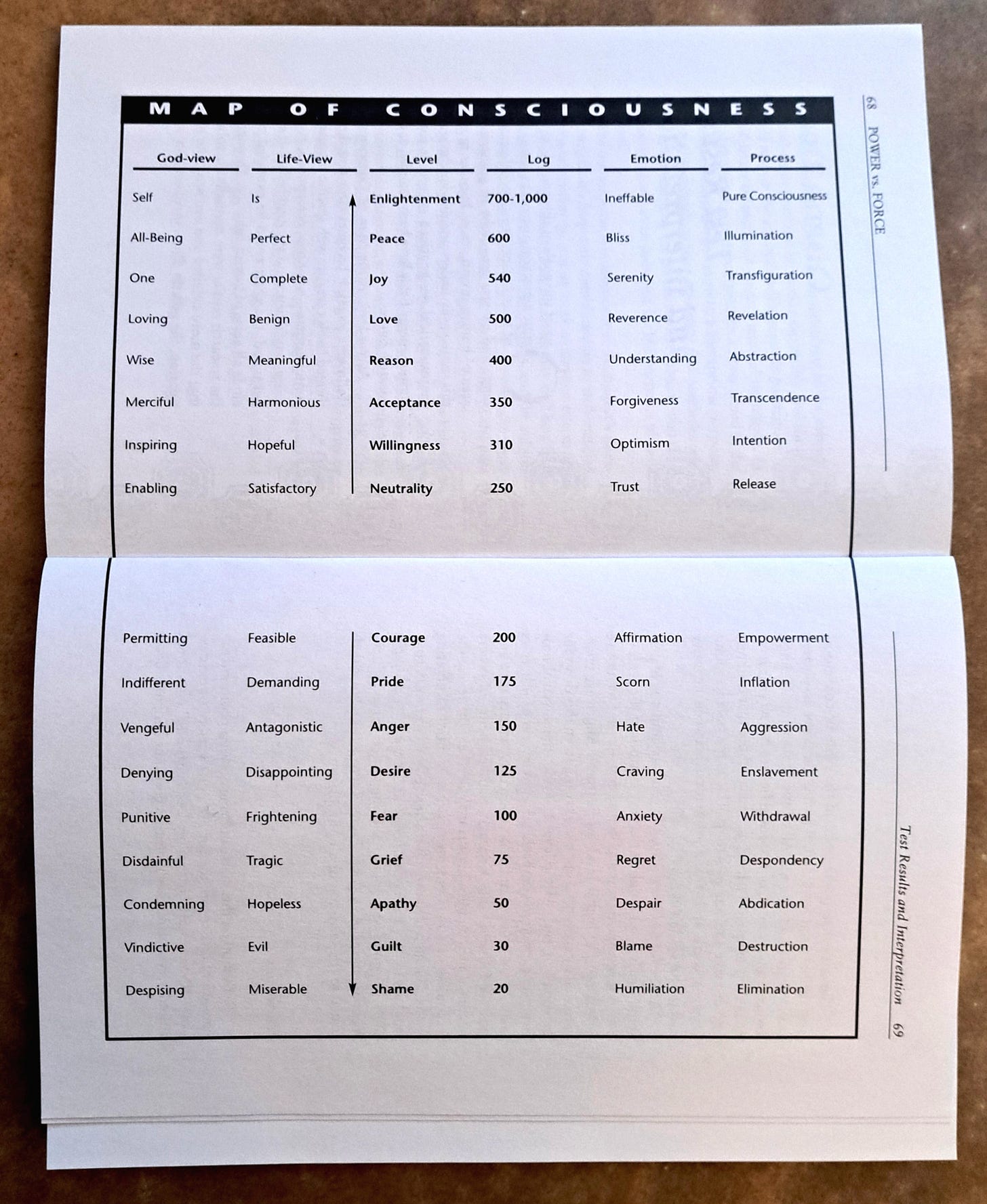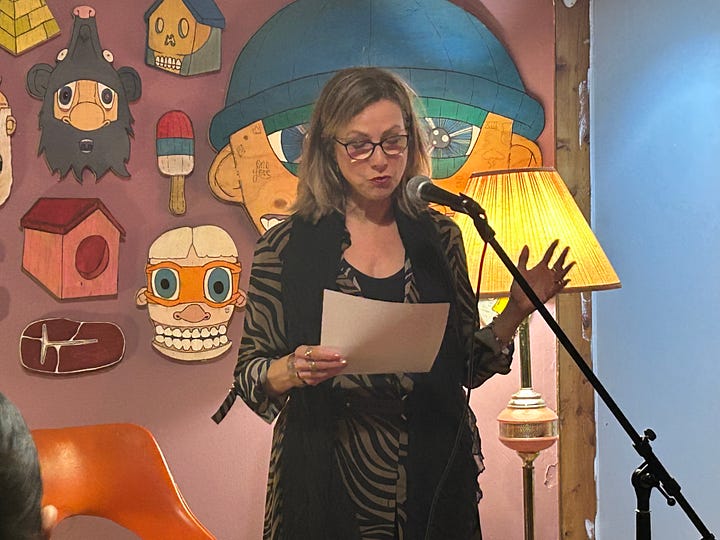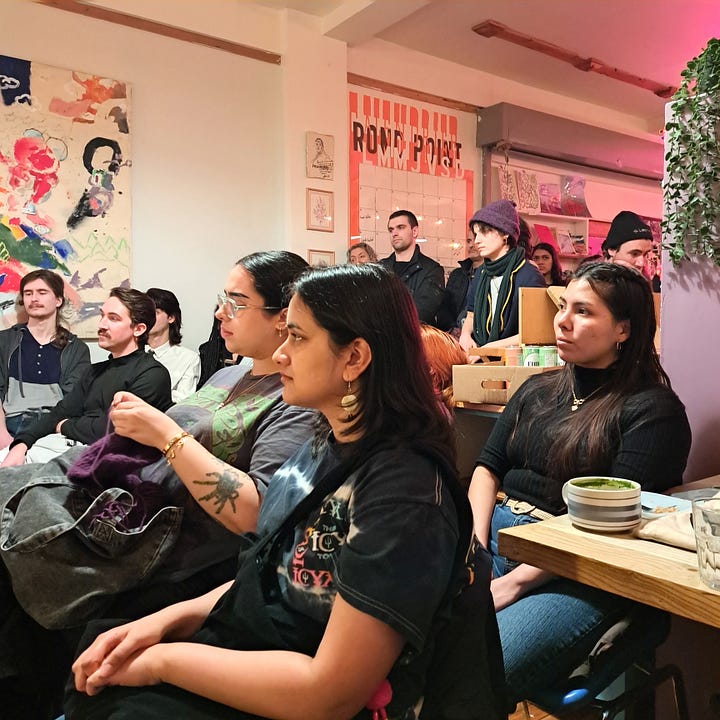“The Subtle Power moves all things and has no name.” —David R. Hawkins, M.D., Ph.D.
Dear Fellow Dreamer,
The summer when I was eighteen, I took myself out of the workforce. During the other long school breaks, beginning at fourteen, I’d always found jobs. What they brought was important to me—a sense of independence, my own money. But at eighteen, in the months before starting university, I’d been slow to search for employment. My parents had just split up, and my father had moved out. I had my own romantic troubles. While I was eager to move on to college, I also knew I’d be living at home for at least another year, and I wanted to be somewhere else. In another city. Another world.
It was the summer I wrote a short story about bulimia and sent it to Seventeen Magazine, because I was bulimic. Months later an editor would write me back with a polite no.
I’m no expert on eating disorders. During my brush with one, I barely acknowledged it. Mostly, that illness stayed in the shadows, but for the story I’d drafted and polished. I remember studying my thinning body—the arcs and hollows of my collar bones, my shrinking belly, the emerging ridges of my hips—in the way a person might find discovering a bird skeleton fascinating. After sitting in the backyard most days, eventually I got a job at the local mall, in a shop called The Picture Store, selling framed reproductions.
In the last piece I sent you, “Unseen Hand,” I described a slow-motion moment at age sixteen that saved my life. At eighteen, I was living a different kind of slow motion. The kind in which a family slowly breaks apart, and has not yet reformed. Coping with that change, a sense of death in our home, as a young person, I wasn’t familiar with the larger patterns of life. I hadn’t learned that in world mythology, as in the world of nature—including human beings—chaos precedes creation. And that sometimes those processes are entwined. Having grown up going to church, even though I was quick to recognize Biblical allusions in the poems and novels we studied in school, I didn’t yet have a lived-and-learned awareness that beyond the parameters of a certain religious paradigm, dying still leads to new life. Destruction, to something as yet unformed. To the potential for growth. A new story.
In that long-ago season, all I felt was lost and angry and trapped and sad. Selling mass-produced wall art didn’t help. Part of me wanted to escape into the wild, to be “a real artist,” to get the hell out of Dodge. Cue addiction. The eating disorder gave me a sense of control, and I guarded my secrecy. While the adults in my family coped with seismic waves in their own circumstances and emotions, no one gave me a hard time about dropping down to 105 pounds on a 5 foot five-and-a-half-inch frame. I liked how the dance clothes fit. But I didn’t much like my life.
A Strange Event
One day, alone in what, by now, I’d come to think of as my mother’s house, I sat pouring a bath. Though light was leaking through the covered back window, it was dusk. So I lit a candle. Perched by the edge of the tub full of water, staring at the flame, I heard a message in my head. A clear, rapid volley of words: “If God is inside you, why do you want to be so small?”
For years, I’ve hesitated to tell this story.
If you know me, then you know that while I’m a spiritual person, I don’t always conflate spirituality with religion, and I don’t push my personal views. You have your own spiritual experiences and views, and I respect that.
All I can say is, at eighteen, hearing those words was the first time I’d ever had a thought like that one. The idea that “God”—if you like, substitute language that speaks to you, perhaps the “Goddess,” or the “life force,” or the “universe,” or the “oversoul,” or the “divine,” or your “higher power,” or the “quantum field,” etc.—wasn’t something separate and out there watching us, but inside us. Somehow, even inside me. Forty years ago, that notion was not in the mainstream consciousness of the culture in which I’d been raised.
With the message came a shift that took me to a new place. An awareness that there was, within me, another story and power that I could hook to. Not a story of self-aggrandizement, but of self-worth and connection. One that, in the moment, filled me with love and awe.
I started eating again, letting food nourish me. I didn’t have to keep shrinking.
A Course in Miracles is one of many texts from a broad variety of spiritual traditions that I’ve studied over the years. Essentially, it says that a miracle is a correction in perception. And that miracles arise from love, and occur naturally. That’s what this particular memory feels like to me.
Nonetheless, I almost didn’t share it.
So, why am I sharing this?
One evening, a couple of weeks ago, when I’d begun thinking about writing this piece, I discovered a copy of David R. Hawkins’ Power vs. Force in a pile of books on my couch. I must have come across it while searching for something else and left it there, later forgetting about it. Drawn to lift the cover again, I was struck by Hawkins’ opening story of a time when he was delivering newspapers as a boy in rural Wisconsin in 1939, in the winter dark, suddenly caught in a blinding blizzard. Freezing, he dug a burrow for himself inside a high snowbank, eventually drifting into an altered state of awareness:
“The shivering stopped and was replaced by a delicious warmth… and then a state of peace beyond all description. This was accompanied by a suffusion of light and a Presence of infinite love, which had no beginning and no end, and which was indistinguishable from my own essence. I became oblivious of the physical body and surroundings as my awareness fused with this all-present illuminated state. The mind grew silent; all thought stopped. An infinite Presence was all that was or could be, and it was beyond time or description.”
His father found him and shook his knee, and while Hawkins felt “a great reluctance to return to the body and all that it entailed,” he loved his father and chose to come back. In his preface, Hawkins goes on to state that he never talked about the event with anyone, and that there was “no context available with which to comprehend it.” He writes, “But after this experience, the accepted reality of the world began to seem only provisional; traditional religious teaching lost significance, and, paradoxically, I became an agnostic. Compared to the light of Divinity that I had felt bathing all existence, the god of traditional religion shone dully indeed. I had lost religion… but discovered spirituality.”
While the details of Hawkins’ story of altered perception in the deep cold, and my story of spontaneous healing are very different, nonetheless, rediscovering his account felt like a synchronicity—an affirmation to share my memory of an instantaneous, life-altering shift in awareness.
In adulthood, Hawkins became a psychiatrist, physician, therapist, and spiritual teacher renowned for his scientific research and writings, including his famous “Map of Consciousness.” While I don’t claim to have a specialized knowledge of Hawkins’ work, I’ve sometimes referred to the chart pictured below in my coaching sessions with clients. It’s widely available online.

Using kinesiology and other scientific approaches, Hawkins tested and mapped the frequencies of the full spectrum of human consciousness and emotional states. He observed that the states below courage (that is, below level 200 on the map) are associated with exerting a force that is not life sustaining. However, a significant shift occurs at level 200, when one connects with a power that is life sustaining. At the levels above 200, that power grows stronger.
How does that relate to the moment we are in?
Over the past few days, while rereading much of Hawkins’ book, this passage stood out:
“The Map of Consciousness also casts a new light on the progress of history. The distinction between force and true power is most important for the purposes of this study. We can, for example, investigate a historical epoch such as the end of British colonialism in India. If we calibrate the position of the British Empire at the time, which was one of self-interest and exploitation, we find that it was well below the critical level of 200 on the scale of consciousness. The motivation of Mahatma Gandhi (calibrated at 700) was very near the top of the range of normal human consciousness. Gandhi won in his struggle because his position was one of far greater power. The British Empire represented force (calibrated at 175), and whenever force meets power, force is eventually defeated.”
It was startling to me, though no surprise, that rediscovering Power vs. Force closely followed my experience of watching a February 7th Marianne Williamson video, in which the author and activist cites Gandhi’s theory of political nonviolence. In the video, Williamson urges viewers in the U.S. to move toward a nonviolent revolution. She points to various (relatively) nonviolent success stories, including the women’s suffrage movement that was largely fuelled by Quakerism and the belief that we each carry a light within us. The two examples of the 20th century’s most successful revolutions Williamson discusses are the Indian independence movement and the American civil rights movement—both born from a spirit of nonviolence.
As a Canadian bearing witness to recent extreme presidential abuses, including the engineered tension between two longtime neighbouring nations and allies, two of the world’s best friends, I appreciate Williamson’s recommendations to read anything by Gandhi (at last, I’ll take up his translation of The Bhagavad-Gita), Martin Luther King Jr.’s collected teachings and writings, A Testament of Hope, and also The Autobiography of Malcolm X. Why? Because in each author’s work, we find the notion that “the political changes we wish to see in the world must be fuelled by spiritual changes within ourselves.” Dr. King called this “cosmic companionship”—a common thread in my last two letters to you.
I recommend watching Williamson’s video. Here’s a passage I transcribed while listening for a second or third time:
“New energies are seeking to emerge. Don’t lose faith in the ever-unfolding power of good, whether you look at that as God, source, higher power, or just that deep spirit within the human being. It is as real as anything happening on the outside. It is more powerful. It’s not coming at us from the outside, but from the inside.”
Coming from a place of sacred inner power—call it the “God inside,” or the “Divine Feminine,” or “the deep quantum realm of infinite possibility,” or whatever meaningful words you love—gives us a sense that that which is desirable is possible.
Casting a compassionate glance back at a long-ago eighteen-year-old who could quote T. S. Eliot’s “The Wasteland” and write essays on Joseph Conrad’s Heart of Darkness, but who knew nothing yet of 13th century Sufi poet and mystic Rumi, I’ll leave you with his words:
Do not feel lonely, the entire universe is inside you. Stop acting so small. You are the universe in ecstatic motion. Set your life on fire. Seek those who fan your flames.
You being here, and reading, and sharing your thoughts and experiences with me fan mine. I hope this letter reminds you that you have everything you need inside to love and trust in life. To take your stand. To shine.
Warmly,
Robin
Quote of the Week
“It is not true that we have only one life to live; if we can read, we can live as many more lives and as many kinds of lives as we wish.”
—S.I. Hayakawa
Author Event of the Week


What’s Ahead
Back to sharing videos with you soon. Paid subscribers, look for an audio gift from me next week. All subscribers can expect my next newsletter on Friday, March 14th.






Recopying my restack comment here, Robin, per your suggestion--to reinforce how we are all being called to be--and share--our light-force:
A powerful story, Robin. Recognizing our inner power—and how sometimes chaos is the necessary force to unleash it—reminds us that, as Walt Whitman wrote, “we contain multitudes.”
We are not the smallness of what is encapsulated in our skin and bones, but a spirit as grand and all encompassing as the All That Is.
It requires, as Hawkins’ table shows, tapping into a higher level of consciousness to recognize that force. Awakening to that level can produce a shock to the system—a swirl of chaos—to unlock that awareness.
And as my mother used to say, “What can happen in a moment could not happen in a thousand years.” A reminder of miracles.
Brava, my friend. In this moment, when I am among the multitudes who are shocked, ashamed and incensed by the low-level of consciousness that has once again been hammered by brute force back into our worldview, thank you for unlocking that awareness—and the knowledge that we are the miracle—the light—we are waiting for.
As Alice Walker wrote in her book, We Are the Ones We Have Been Waiting For, “When life descends into the pit I must become my own candle Willingly burning myself To light up the darkness Around me.”
Pull quote from your post:
"Coping with that change, a sense of death in our home, as a young person, I wasn’t familiar with the larger patterns of life. I hadn’t learned that in world mythology, as in the world of nature—including human beings—chaos precedes creation. And that sometimes those processes are entwined."
I love your post, Robin. Thoughtful. Beautifully written. Thank you. Reflecting on Hawkins’ example of Gandhi and the British Empire at the time leading up to Indian independence, I feel that the forces today of right-wing nationalism, libertarianism, anti-environmentalism, racism, etc. etc. are all, and can only be, rooted in fear, in the lower echelon of Hawkins’ ranking system. As frightening as they appear to be, and they are, these are the rantings of disturbed children who are under the illusion that their only power lies in fear-mongering, baiting and anger.